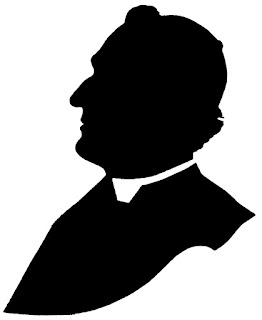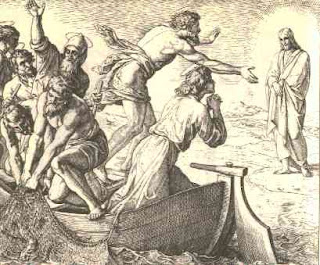The Archdeacon: Chapter Ten
Chapter 10:
The
Conclusion
Thus, the
Archdeacon concluded his visitation of Milbank Deanery. The Bishop accepted
most of his recommendations and put her own personal touch on a few of
them. It had not been an easy task for
him. After the completion of only one deanery, as one might expect, he was
emotionally exhausted. It was not an easy thing to sit in judgment over the
fate of parishes, most of which, had been in existence for at least a hundred
years. Each place was filled with
stories and histories. Each place was, in some way, a liminal spot, where heaven
and earth touched. Each place had witnessed the best of humanity, and
occasionally, the worst. It was an awful responsibility. Although the final say was the Bishop’s, she
trusted his counsel, and for the most part, followed his advice. This was but
the first deanery he was to visit, and he had many more yet to see. This had
given him a taste of what his life would be like for the next while. And where colleagues had feted him before, now
they were wary of catching his eye.
True, there were the sycophants who cozied up to him in hopes that he
would spare them, but everyone saw through them, especially the Archdeacon,
himself. He was once a man with many
friends. Now he was quite alone.
The reader is
probably anxious to know how things worked out in Milbank, and I would be remiss
if I did not give a complete rundown of the changes that were made after his
recommendations were submitted. Allow me to start with that most unique of
parishes, St. Anskar’s. The reader will recall that this is the parish that is led
by the Rev. Rebecca Hope. The interior had been gutted and worship no longer
resembled anything akin to Anglican liturgy. Well, it was left untouched. Despite its particular idiosyncrasies, money
still talks, bums in pews still count, and effective outreach ministry still
matters very much. St. Anskar’s has all these things and continues to
thrive. The Bishop made every attempt to
speak with the Rev. Rebecca Hope as to remind her about how proper decisions
are made and how Anglican governance works. However, whenever she tried to get
through to the parish, the cagey rector was always in some important meeting
and unavailable. A letter was finally
sent calling her to the Bishop’s office for a meeting. Such meetings are of a
very confidential nature and I have no knowledge of what transpired except that
Rebecca Hope is still very much at her post at St. Anskar’s; and there, I am
very happy to leave her. The Chancellor,
after much calming by his dear wife, decided not to pursue any action with
respect to the sale of his great-grandmother’s window, but I am told that
whenever he his out and about that he stops at every antique mall to see if it
has turned up and peruses eBay in case it comes up for resale.
The reader
will also recall that quaint little parish of St. David’s – the one with the second-hand
shop and was nearly $400,000.00 in debt to the Diocese. To everyone’s surprise,
it did not close after all. I wish I
could report that it was the effect that the little shop had on our hero the
Archdeacon. He was certainly moved by it and the ministry and community that
happened in that little space. Yet, he
was a pragmatist and took his commission very seriously. In his report he had
put it on the chopping block. However, the Bishop had second thoughts. After pouring
nearly half a million dollars into the place, the building was in good shape,
and it was thought that that investment should not be lost. It would get one more chance and the debt was
forgiven. Young Fr. Fairview would be offered a new incumbency somewhere else,
in a church that had less of a financial burden, in which he could make a
better future for himself and where his gifts could be better employed. However, before this could be arranged, the
bishop of the neighboring diocese ferried him away and offered him a rather
nice incumbency at a parish in the see city of that diocese. Word has come to
me that he is doing very well and has not regretted the move at all.
The Bishop
had the idea of then adding St. David’s to Mr. Perkin’s cure of souls. He would
remain the rector of Hampton’s Corners, but he would receive the additional responsibility
of this little parish. If the Bishop
could not get her hands on the Hampton’s Corners endowment, she could surely
leverage it by amalgamating the parishes and having it finance Mr. Perkins’
ministry in both places. Mr. Perkins was
at first reticent, but he was also a faithful priest and a man under vows who
never disobeyed his bishop. Thus, he
chose not to make a fuss about it and took it all in stride. Somehow,
miraculously, he managed to convince both churches that it was a blessing for
them to be yoked together in this arranged marriage. He held special social
events and combined Bible studies and occasional services, and pretty soon,
they were all getting along surprisingly well. I think it is a testament to his
underappreciated skill as a pastor. Before long, Mr. Perkins had set aside two
days a week to spend at St. David’s and in that little village. He quickly became everyone’s friend, and he
especially endeared himself to the incomers and artisans who loved the little
church but were not much invested in it.
Some of them started coming to church from time-to-time and even
supporting it. If you pass through that
little village on a Tuesday or Thursday, you are very likely to see Mr. Perkins
out and about chatting with the locals.
He continued to thrive at Hampton’s Corners, as well. I suspect this is not the last we shall hear
of him.
As for St. Osmund’s
in Midway. Yes, it was indeed closed.
The Bishop had an engineer from a big firm come in and give the building
an assessment and it was declared condemned. Within a short time, the church
and property were sold for an extraordinary sum, which went to the capital coffers
of the diocese. The building was soon torn down and it was not long before two
large luxury condominiums rose from the ashes. The only memory of St. Osmund’s
is in the name of the new complex, which is called “St. Osmund’s Towers.” It was not as hard to get the placed closed
as one might expect. When the potential
repairs and their attendant costs were set before the exhausted church wardens,
they concurred that disestablishment seemed like the only option. A special meeting of the vestry of the parish
was called and the vote on disestablishment passed without much objection.
As for the
Rev. Canon Christa Clement, its rector, the plan had been to offer her St.
Alfred’s, the other parish in town, if they could get old Canon Swiftman to
retire. It was thought that she could
breath some new life into the place, and hopefully bring the remaining active
members of St. Osmund’s with her. This did
not go as either the Archdeacon or Bishop had hoped. I think it will come as no surprise that
Christa was very hurt, angry in fact. I
do not blame her. I don’t intend to go over
everything that happened next, especially what happened between her and the
Archdeacon; these are their private affairs.
I will only say that after the disestablishment the Bishop granted her a
well-deserved sabbatical, which she took in the U.K. She never returned. After about two months the Bishop received a
letter saying she had been offered chaplaincy position at a college in a large
English university and asked the Bishop’s leave to accept it. Of course, the Bishop gave her reluctant
blessing. There Christa Clement remains. I have heard very little of her since.
The hope
that the remaining active members of St. Osmund’s would migrate to St. Alfred’s
and fall under the care of the old Canon never materialized. Several of the faithful decided to drive out
to one of Mr. Perkins’ parishes and have much valued members in those little
churches. A couple of others who had long
been pushing for modernizing the liturgy made the exodus to St. Anskar’s and
were warmly welcomed by Rebecca Hope and Ernie the warden. The rest, well, they would rather become Presbyterians
that cross town and go to the other Anglican church. Rev. Scottie Hamish at St. Andrew’s was very
pleased to accept them into his fold.
Canon Swiftman
remained at St. Alfred’s. There wasn’t
much to be done there that time wouldn’t sort out on its own. So, it seems likely that the old man will be
faithful to his promise that the only way he leaves the church will be in a
pine box. He’s still hanging on and still purging his library. Last week I found
his copy of “Essays and Reviews” in a bookshop and bought it straight away.
And what of
our friend, the Archdeacon? Well, he did visit the rest of the diocese. It took him a year-and-a-half. When it was done, the diocese was considerably
changed, and so was he. There were many closures, quite a few amalgamations,
and, I am happy to say, even some new church plants. The visitation facilitated
the retirement of some older clergy, the decampment of others to neighboring
dioceses, and a general rearrangement of the rural deaneries. It was a challenging and formidable time for
our diocese. There was a lot of grieving, but as always, God is faithful and there
were many new and wonderful beginnings. Perhaps I shall relate one or two of
them sometime in the future.
Faithful
reader, you may be wondering if the Archdeacon ever visited my little parish.
Indeed, he did. As expected, he looked over my vestry books, read my meeting
minutes, checked the figures in my financial reports; he toured the lovely
little building and inquired as to what sort of ministries went on in the
place. We had the most delightful lunch together. I am happy to report that my parish escaped
the clutches of closure for various reasons which I would prefer not to relate, except to
say, that the author of this little memoir knows a lot of things about a lot of
people.
THE END




Comments